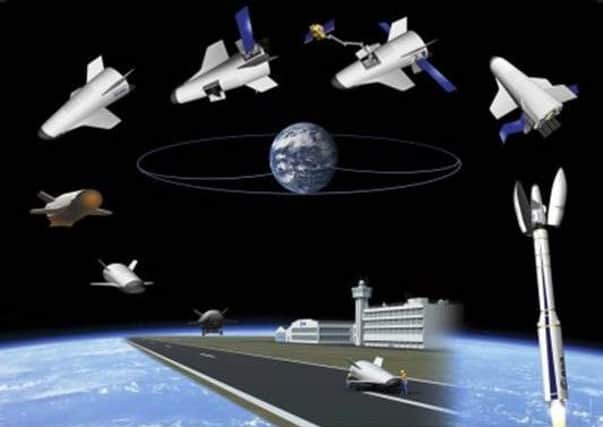Leading-edge space tech made in Bedfordshire


Engineers at Lockheed Martin’s Ampthill site will develop two key parts of the cutting-edge, multi-million euro Space Rider, an unmanned craft which will carry out scientific missions.
The firm will work on the actuator system, which operates flaps to steady the flight during re-entry; and the landing system to bring the spacecraft safely back to earth.
Advertisement
Hide AdAdvertisement
Hide AdSpace business lead Stephen Gibson said: “This is a first for Europe and a first for Lockheed Martin in Ampthill.
“Space Rider will be launched into orbit and from there can help us understand things such as how plants grow or how technology functions in space.
“It will stay up there for anywhere from two weeks to six months and will fly a couple of times a year, with each craft designed to carry out at least six flights over its lifetime.”
The Space Rider is being developed by the European Space Agency (ESA) to be launched from a rocket and survive re-entry into the Earth’s atmosphere, making it reusable and an affordable way to bring important findings back from space.
Advertisement
Hide AdAdvertisement
Hide AdIt will be able to gather scientific data, carry out exploration missions as it orbits the earth, and deliver cargo to and from the International Space Station.
Lockheed Martin Ampthill has been contracted by the Italian Aerospace Research Centre (CIRA), who, together with Thales Alenia Space Italy, is developing the craft for ESA.
As part of the deal, Lockheed Martin will research landing solutions for the spacecraft.
Technical lead Alex Godfrey said: “Space Rider will re-enter our atmosphere at 7.5km a second. Making sure it lands back on earth safely is a major part of the project.
Advertisement
Hide AdAdvertisement
Hide Ad“We’re looking at two solutions. The first is a mid-air retrieval system, or MAR, which will mean the spacecraft is slowed down by a parafoil and then captured in the sky by a helicopter; the second is more traditional wheeled or skidded landing gear, with it coming to rest on a runway.”
The firm will explore both options before presenting their results to CIRA and ESA.
Space Rider is expected to have its first launch in 2020.